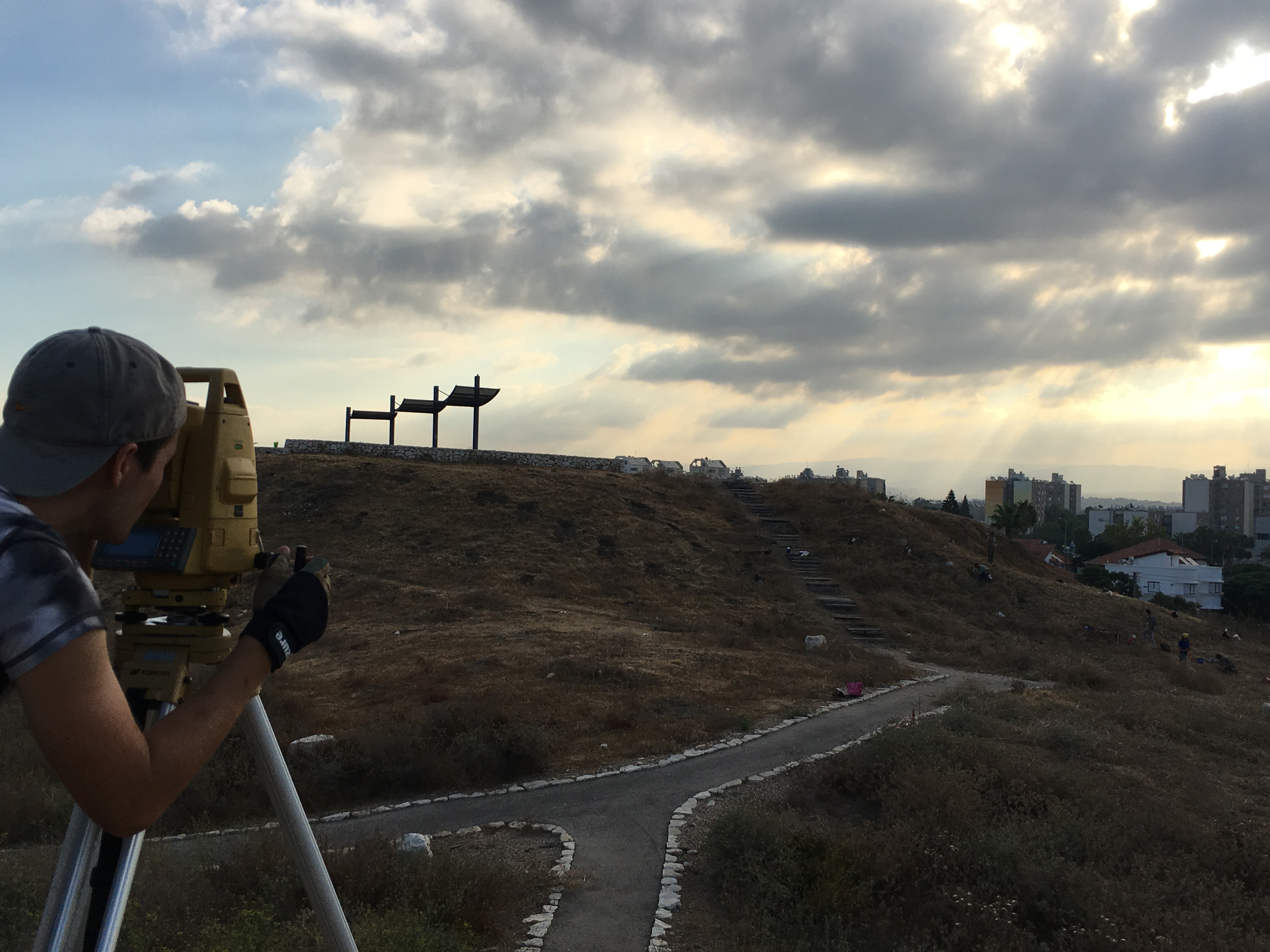Survey archaeology, impression and experience
Over the course of my four weeks at Tel Akko I have had the opportunity to discover a type of archaeology of which I was previously quite ignorant: survey archaeology. Prior to my time at Akko, I had had a chance to work with several tools used on survey such as the total station, resistivity and ground penetrating radar scans. However, Akko was the first time I had really had a chance to understand the results survey archaeology generated and how vital it is for an excavation.
(Total station looking over the survey site)
My first impression of survey is that it’s an entertaining, yet mindless task, which was a nice break from the very detail oriented main excavation. That opinion, however, was quickly altered once I began to actually learn about the process and the many sides of survey archaeology. The survey work I was doing involved, for the most part, digging 40 cm deep holes with pickaxes and collecting the finds that I uncovered from the different levels. The purpose of this task was to find evidence of the sorts of pottery that might be found across the site, learn what groups were present at different levels on the site, and uncover any major structures those groups left behind. Since survey archaeology can move quite quickly over a lot of ground it is also able to dig in areas that might not be considered worthy of a full excavation, which can occasionally lead to some vital and startling discoveries. For instance, the survey team had, in previous years, discovered the area of site we were digging in contained the remains of a Persian city which had covered a large section of the hill.
(Possible Persian structure)
This area had been considered too disturbed by medieval plowing and later British digging projects to require a proper excavation and a valuable section of the tel’s history would have been completely lost without the survey test pits. Learning about the thought, effort, and skill that survey archaeology requires, as well as the advantages and opportunities it allows has, without a doubt, been the most useful and enjoyable lesson I got out of Tel Akko, and I hope to possibly use this lesson in my future.
